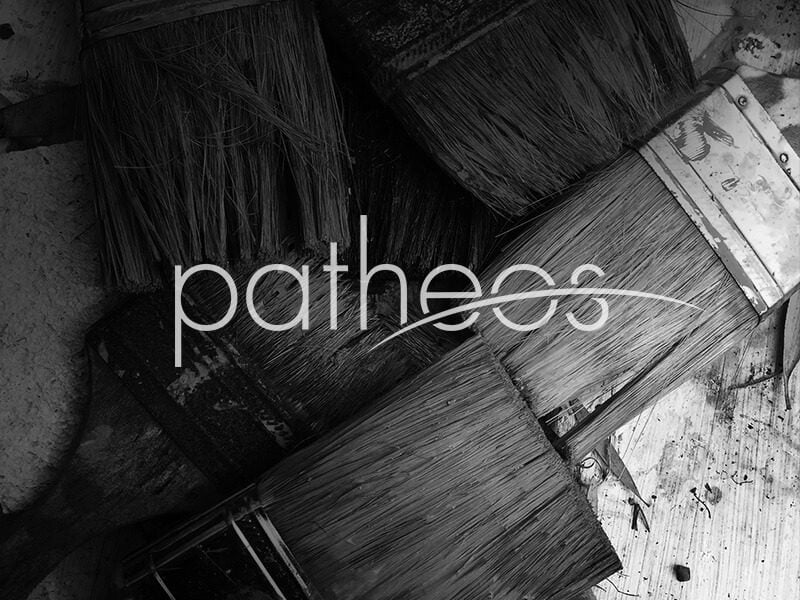I first heard about Margaret Barker seven years ago and have watched from the sidelines as LDS scholars have fallen all over themselves after her ideas. However, I have never read her work. My avoidance of her work changed when a friend of mine sent me one of her lectures for comment (this is a great way to maintain a long-distance friendship, btw). It was worse than I imagined. I listened to the 35 minute lecture probably 10 times and just got more frustrated every time. I am slightly embarrassed by this episode of LDS intellectual history. It represents a step backwards in dealing with the contemporary critical evaluation of biblical texts and ANE religion.
The lecture in question is called “What Did King Josiah Reform?” She delivered it at BYU some time ago. The main thesis of the paper is that Josiah’s Deuteronomic reforms were a major departure from earlier Israelite temple worship and that many people strongly opposed these changes. This seems perfectly fine and uncontroversial, and I have absolutely no problem with this argument. The problem is in her imaginative reconstruction of this earlier ritual and other religious themes that she thinks were reformed.
Barker reconstructs earlier Israelite religion as consisting of, among other things: Asherah worship (the temple Menorah was the Asherah), child sacrifice as atonement, the ability to experience a vision of God, the belief that God’s son is the God is Israel, a Melchizedek priesthood, angel worship, that the temple rooms corresponded to the days of creation, and a scattering of true believers who resisted Josiahan reforms and maintained “authentic” worship. It is easy to see why LDS readers are attracted to many of these ideas (though Asherah worship and child sacrifice don’t seem all that helpful). But this is exactly the reason that we need to critically investigate these claims. They are too easy.
There are essentially two problems with her argument. First, Barker’s historiographical method relies on texts and accounts that are far removed from the historical period she is reconstructing, which makes it extremely unlikely that these texts contain reliable historical data. Second, she is working on a number of hidden assumptions about the consistency of interpretation of pre-Israelite religion. She only has two views of this history. There is an “authentic” worship which can be recovered by her, and the Josiahan reform. This assumption masks the rather obvious fact evident in the texts that she is studying that there were numerous interpretations of what the “authentic” version of ancient Israelite religion was. Both of these problems cause her to overlook what is actually interesting about the material that she is studying, namely, that diverse ancient religious parties appealed to an idealized view of pre-exilic religion in order to give their own views authority.
First, the thesis suffers from a series of truly unforgivable historiographical sins. The most obvious is that the majority of her sources for this reconstruction come from many centuries after the fact and from groups who have a vested interest in controlling a particular view of Israelite history. For instance, she uses Christian texts up through the fourth century CE frequently in her reconstruction, which unsurprisingly makes early Israelite religion look like and prefigure Christianity. Further, the texts she uses rarely actually attempt to represent ancient Israelite religion, it is simply her extrapolations. The Christian views are better explained by their own immediate historical context rather than appeals to a secret tradition from a millennium before.
Barker’s use of Jewish texts is equally problematic. She use DSS and Enochic literature to reconstruct what was happening in the First Temple, even though these texts were written hundreds of years after the First Temple had been destroyed. She conflates Jubilees, 1 Enoch, and the Damascus covenant as if they represented a shared view of the temple. But most egregiously, she fails to note that the critiques of the temple in these texts have to do with Second Temple politics, including disputes over priestly families in control of the temple, not with the First Temple at all. Additionally, she attributes the loss of the Menorah and Ark of the Covenant to Josiah’s reforms rather than Babylonian conquest. No ancient texts ever even insinuate this, but it is a major part of her argument. Finally, her appeal to the fictional Recabites (she offers a rather Christianized reading of this text) as evidence for concrete historical information is highly problematic and what she chooses to identify as the historical kernel of that account is arbitrary at best.
When she starts looking to Islamic texts and early 20th century missionary accounts to Tibet, we are in serious trouble. The argument looses even more credibility. The principle historiographical problem with her reconstruction is precisely that it relies on so many different texts from different time periods without any acknowledgement that these accounts are historicized by their own environment. Rhetorically, it appears that she is mounting evidence for her case, but in reality it is smoke and mirrors. There are no texts that include all of these descriptions of ancient Israelite religion. The reconstruction involves taking elements out of context from diverse religious groups in ancient Judaism and Christianity and cherry-picking how those pieces get put back together. For instance, she concludes that since one of the DSS is about Melchizedek, that “Melchizedek must have been a part of earlier religion.” There is simply no reason to make this assumption. The more likely explanation is that 2nd c. BCE separatists developed theologies out the holes and gaps in the biblical text in order to make appeals about new teachings and give them authoritative status. Many of her other ideas don’t even have one text to back them up since she relies on inference or silence to make her claims. In other cases, she starts with her conclusions and then attempts to interpret the texts on that basis. For instance, because 4th century CE rabbinical texts make one statement about the temple symbolism related to the creation, she asserts that all previous Jewish texts about creation must be talking about the temple.
This is the basis of the second major problem: her complete lack of any historical analysis. There is no sense that traditions change and develop over time and that different contexts will provide different interpretations of the past and the present. She doesn’t seem to have any critical evaluation of why these religious elements were changed, or why they were “preserved.” Instead, the narrative theme of the changes is that of apostasy from a pure, original, true worship. While this theme will sound familiar to LDS readers, it represents an unsophisticated view of historical developments. A more responsible historical approach would be to see the multiplicity of claims to authority and authenticity, and that there were more than two views of the temple which survive from ancient Israel. This problem I think is repeated frequently in her historical method, which can best be described as parallelomania combined with vivid imagination. At best, she is simply uncritically repeating the historical imaginations of pious ancient Christians and Jews. At worst, she is producing her own pious imaginations and attempting to attribute them to early Christians and ancient Jews.
The missing link in her evaluation is that the information that she actually surveys really tells you how early Christians, Muslims, second temple Jews, and 20th century missionaries appealed to First Temple Judaism and to ancient Israelite religion as a basis for legitimacy and authenticity. There is no reason to suspect that what they actually said about that has any historical basis whatsoever. In the same way, Barker and many LDS thinkers are engaged in the same kind of project, to appeal to pure “origins” of Israelite religion in order to produce authenticity about contemporary beliefs and practices. Such an approach is necessarily partial and selective. Instead of learning about ancient Israel, we learn about those who are attempting to recount its history. If Barker’s work has any value, it is in the exposure of this theme in various religious traditions up until today.











